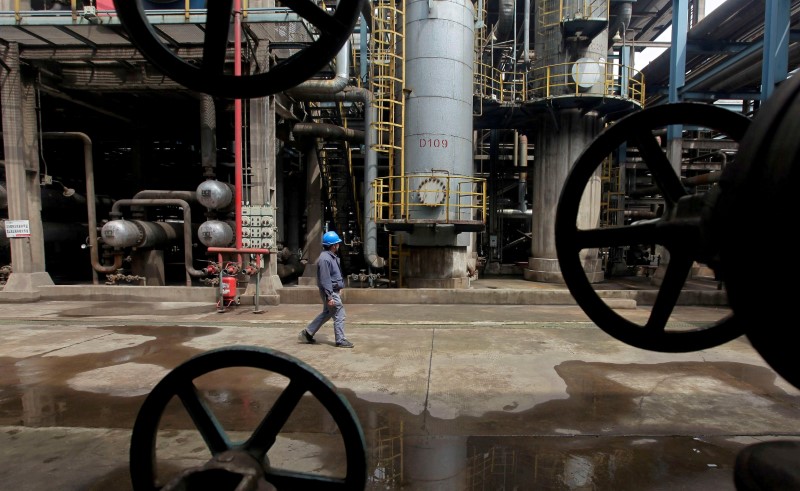* OPEC lobbies for extension to cut output beyond H1 2017
* Relentless rise in U.S. output undermines OPEC efforts (Adds comment, updates prices)
By Henning Gloystein
SINGAPORE, April 28 (Reuters) - Oil prices rose on Friday but were still on track for a second straight weekly loss on concerns that an OPEC-led production cut has failed to significantly tighten an oversupplied market.
U.S. West Texas Intermediate (WTI) crude futures CLc1 were trading at $49.40 per barrel at 0344 GMT, up 43 cents, or 0.88 percent, from their last close. However, WTI is still set for a small weekly loss and is around 8 percent below its April peak.
Brent crude futures LCOc1 were at $51.86 per barrel, up 42 cents, or 0.82 percent. Brent is almost around 8.5 percent down from its April peak and is also on track for a second, albeit small, week of declines.
Traders said that Friday's rises came on the back of OPEC saying it was keen to find a deal that would ensure a drawdown of excess fuel supplies. Organization of the Petroleum Exporting Countries (OPEC) and other producers including Russia originally pledged to cut output by almost 1.8 million barrels per day (bpd) only during the first half of the year. But OPEC has come under pressure to extend the cuts to cover all of 2017 in order to counter bulging supplies elsewhere.
"OPEC...effectively said the production cut will be extended, meeting the reality of the restart of a big Libyan oil field and the continued expansion of U.S. shale oil," said Greg McKenna, chief market strategist at futures brokerage AxiTrader.
The ongoing supply overhang is in part due to surging U.S. production C-OUT-T-EIA , which has risen by 10 percent since mid-2016 to 9.27 million bpd.
Consultancy Rystad Energy expects U.S. shale oil output to grow by 100,000 bpd each month for the rest of this year and into 2018, well above estimates by the U.S. Energy Information Administration for monthly gains of about 29,000 bpd in 2017 and 57,000 bpd in 2018. the United States, rising output in Libya, an OPEC-member exempt from the cuts, was adding to plentiful supplies. bank said that OPEC was under pressure to extend the cuts.
"Even though inventories have started to fall, they remain at elevated levels...Stocks have settled into the 62-65 days consumption or approximately 2.98 billion barrels," ANZ bank said in a note on Friday.
This compares with the five-year average of 55 days' worth of consumption that Saudi Arabia wants to achieve.
In order to achieve this, ANZ said it expected OPEC to extend its cuts beyond the first half of 2017, although it added that "there is some risk that non-OPEC producers (such as Russia) may baulk at the suggestion".
<^^^^^^^^^^^^^^^^^^^^^^^^^^^^^^^^^^^^^^^^^^^^^^^^^^^^^^^^^^^ Murky oil inventory picture leaves market grappling for clarity
COLUMN: OPEC heads for failure as crude shipments overwhelm cut rhetoric
